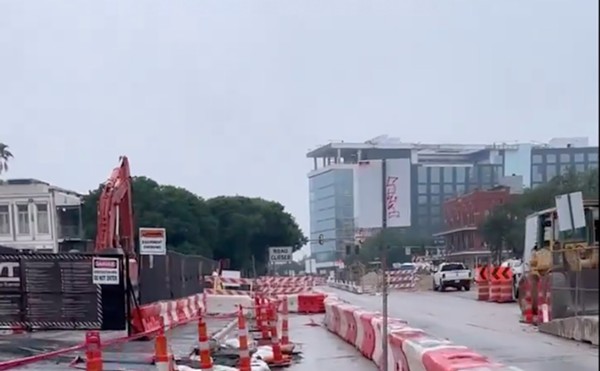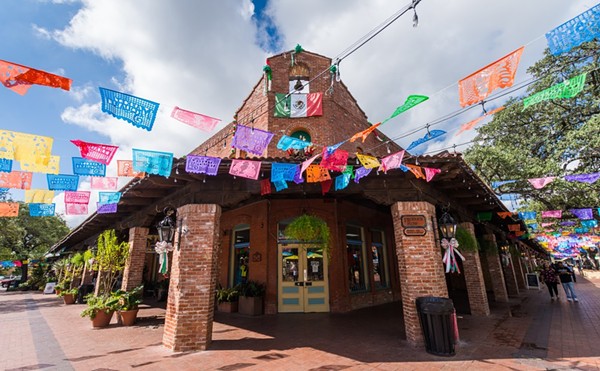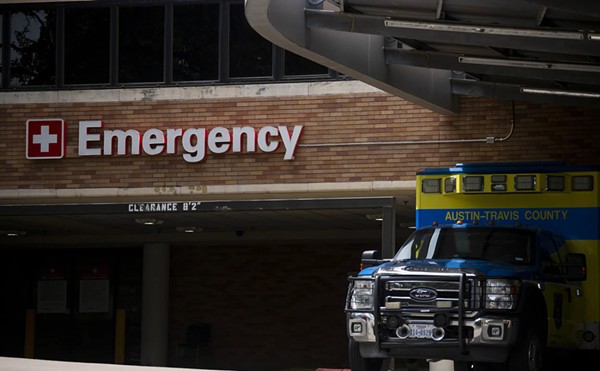Sorry we messed up your river. You know, nothing personal. It's just so much easier to flush our filth than to deal with it. You could even call it tradition.
We know it doesn't help that San Antonio Water System sometimes exceeds its permitted pollution levels of bacteria-feeding nitrogen. But they're pretty good, generally.
However, in this hunt for oxygen-depleting pollutants that have left the Lower San Antonio River an unhealthy habitat for fish, fowl, and regular folk, I would suggest you turn your eye to Schertz.
Call it an "informed hunch."
As you may know, the Texas Commission on Environmental Quality is required under the federal Clean Water Act to periodically to review stream and river segments across the state under its Total Maximum Daily Load program, which, in effect, tells us how much we can dump into a water body and maintain it for its "intended use."
There's the catch. Some rivers may be legally intended just for you to look at; a few may be clean enough to recreate in; some are so clean, you can (or should be able to) eat fish from them.
Right now, your San Antonio River segment is no good on the recreation side. We're really sorry about this.
I'm glad the state is going through this whole to-do, drawing attention to the problem with the river and calling public meetings 'n all. But if you are hoping for improvement, I would suggest you turn your eye to Shertz.
Five miles upstream from where the Cibolo feeds into the San Antonio, the TCEQ ID'd "impaired fish communities." You may want to ask someone about it.
I went to a recent report by Environment Texas and found that the Schertz wastewater plant had discharges violating its permits 49 times just in 2005, according to numbers the group culled from the EPA. These discharges included a chlorine dump of 1,122 percent over permit; a long list of nitrogen and ammonia totals (averaging around 100 percent over permit); as well as a handful for suspended solids and discharge of inadequately treated sewage (high carbonaceous biological oxygen demand, for you aquatic watchers).
I went next to the TCEQ for a compliance history on the Cibolo Creek Municipal Authority. Their report went back to 2002 and held 55 "moderate" offenses.
You may wonder when so many moderate offenses and apparently significant river damage becomes a big deal. You and I would be in the same boat. That's what I'm waiting to find out. So far, I've only found a solitary $8,000 fine.
Here are some notes on the TCEQ's planned TMDL for the Lower San Antonio River.
The goal for this TMDL project is to determine the maximum bacterial loading the stream can receive and still allow support of the contact recreation use. Elevated levels of indicator bacteria such as Escherichia coli (E. coli), although not generally pathogenic, indicate the potential for risk to public health. The criteria for support of the contact recreation use are based on indicator bacteria rather than direct measurements of pathogens.
I won't be able to make your meeting tonight, but some of you downstreamers may want to stay up for the event… maybe ask a question or two.
Here's the release on the meeting:
The TCEQ will conduct a meeting to receive oral and written comments on the TMDL on Wednesday, May 28, 2008 at 7:00 p.m. at the Parish Hall of the Immaculate Conception Catholic Church, 207 N. Commercial, Goliad.
The meeting provides the public an opportunity to comment on the draft TMDL. The commission requests comment on each of the major components of the TMDL. After the public comment period, TCEQ staff may revise the plan, if appropriate. The final document will then be considered for adoption by the commission. Upon commission approval, the plan and a response to public comments will be made available on the TCEQ Web site.
More information on the project and the draft TMDL is available online: www.tceq.state.tx.us/implementa
The goal of a TMDL is to determine the amount (concentration or load) of a pollutant that a body of water can receive and still support its beneficial uses. As required by §303(d) of the federal Clean Water Act, one TMDL was developed for bacteria. A final TMDL will be adopted by the commission, and subsequently approved by the EPA, as an update to the State Water Quality Management Plan.
Written comments should be submitted to Kerry Niemann, TCEQ, Water Programs Division, MC 203, P.O. Box 13087, Austin, TX, 78711-3087 or faxed to (512) 239-1414. All comments must be received no later than 5:00 p.m. on June 21, 2008 and should reference, One Total Maximum Daily Load for Bacteria in the Lower San Antonio River.


















